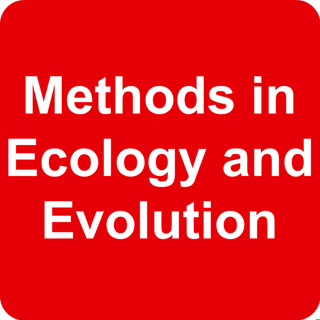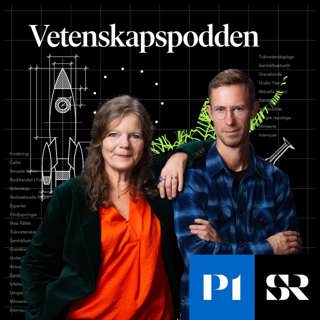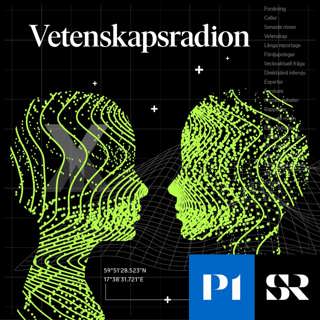
MEE: Regression dilution in species distribution models
Read the article: http://onlinelibrary.wiley.com/doi/10.1111/j.2041-210X.2010.00077.x/abstract
22 Nov 201212min

MEE: The pace and shape of ageing
Read the article: http://onlinelibrary.wiley.com/doi/10.1111/j.2041-210X.2010.00087.x/abstract
22 Nov 201210min

MEE: Fine-scale GIS niche estimates for fishes
Jason Knouft, from Saint Louis University, Missouri, talks to Elizabeth Horne about his recently published paper, "Using fine-scale GIS data to assess the relationship between intra-annual environmental niche variability and population density in a local stream fish assemblage". Jason establishes the need for broad-scale geographic considerations of ecological issues, and explains how the application of these methods on a finer scale can yield new and valuable insights into the exploitation of ecological niches by local populations, and such populations’ likely reactions to new seasonal and environmental stresses. Read the article: http://onlinelibrary.wiley.com/doi/10.1111/j.2041-210X.2010.00076.x/full
22 Nov 20124min

MEE: Getting started with meta-analysis
Freya Harrison, University of Oxford, UK talks with Graziella Iossa about her review on getting started with meta-analysis. Freya explains that meta-analysis is a statistically robust way of putting together results from different studies that test the same hypothesis. She provides in this review a 'road map' to the topic so that beginners can get a head start on meta-analysis. Meta-analysis hopefully will be more used as a result in the fields of ecology and evolution. Read the article: http://onlinelibrary.wiley.com/doi/10.1111/j.2041-210X.2010.00056.x/full
22 Nov 20124min

MEE: The art of modelling range-shifting species
Jane Elith and Michael Kearney, University of Melbourne, Australia and Steven Phillips, AT&T, USA talk with Graziella Iossa about their work: 'The art of modelling range-shifting species'. Jane explains that this is a method to predict species distributions, whose range are shifting, like invasive species or species responding to climate change. Mike Kearney then specifies why they used cane toads as a case study for their work. By taking characteristics of the animal and putting this information together they could ask from a physiological point of view, where cane toads could not live. They also asked how to bring together this mechanistic approach with more traditional approaches. This work advances methodology by combining information from physiological models to data in the correlation-based ones; by looking at details of how you can do the modelling; and by looking at tools for understanding models and data, something that a lot of people will find interesting. Then Steven explains about MaxEnt, a programme that models species distributions based on a machine-learning approach, developed with other colleagues and freely available on the web. For example a common use of the programme is predicting how climate change will affect species distributions. Finally, Mike reports that this method should be useful to anybody trying to predict species with unequal distributions. Jane also precises that students, managers, researchers could be potentially interested, especially given that MaxEnt is freely available. Read the article: http://onlinelibrary.wiley.com/doi/10.1111/j.2041-210X.2010.00036.x/full
21 Nov 201211min

MEE: Measuring relative data quality
Art Munson, Cornell University, USA, talks with Graziella Iossa about his work with colleagues in developing a method for measuring the relative information content of data from different monitoring protocols. Art presents a method to compare the information from two data sources. As often in ecology data are difficult to compare because they have been collected at different points in space and time, Art and colleagues propose using a model that summarises each of these data sources and allowing a direct comparison of the data. Their work advances methodology in ecology and evolution in two ways. At first they were analysing a citizen science project, the eBird dataset, which collects bird observations throughout the western hemisphere and there was a question of how much the biological information was being collected by this citizen science project. One outcome of their work found that eBird is collecting a lot of useful information. More generally, this method can be applied to verify data sources for lots of different purposes. Read the article: http://onlinelibrary.wiley.com/doi/10.1111/j.2041-210X.2010.00035.x/full
21 Nov 20125min

MEE: The Primate Life History Database
Karen Strier, University of Wisconsin-Madison, USA, and Susan Alberts, Duke University, USA and Institute of Primate Research, Kenya, talk with Graziella Iossa, MEE Journal Co-ordinator, about their work with co-authors: The Primate Life History Database. This online database is based on long-term datasets that researchers at several institutions in North America have created to make data comparable across studies. It will aid future comparative analyses of primate data and the creation of easily archivable output. The most important features of this database, as Susan points out, are its structure and the use of a common vocabulary. Karen and Susan hope that it will be applicable to studies of most vertabrates and certainly of mammals. Read the article: http://onlinelibrary.wiley.com/doi/10.1111/j.2041-210X.2010.00023.x/full
21 Nov 20126min

MEE: Phenological estimators using simulated data.
Graziella Iossa interviews Jean-Pierre Moussus, MNHN - EGB about his work with co-authors Romain Julliard and Frederic Jiguet on phenological estimators using simulated data. Read the article: http://onlinelibrary.wiley.com/doi/10.1111/j.2041-210X.2010.00020.x/full
21 Nov 20127min





















